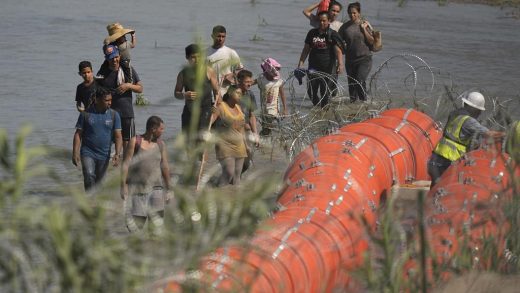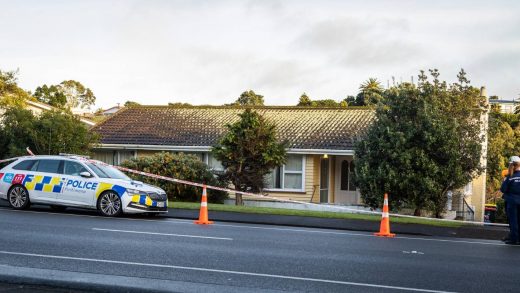
When Mark the Saddler opens shop for the day, he doesn’t know what he’s going to get.
Some days it’s repairing ancient saddles or old furniture, other days it’s making whips for the local brothel.
Mark Cullimore, or Mark the Saddler as he’s better known, set up shop in a shed on the outskirts of Inglewood about a year ago.
Saddles hang from the rafters, a sign outside says “toot for service”, and Mark is dressed in a bush shirt and gumboots, the perfect uniform for a man who’s spent most of his life working with leather and the land.
READ MORE:
* Moving a mountain to help the Taranaki bach owner whose lawn was taken by a river
* Puanga Kai Rau Festival at Parihaka a spiritual and cultural event that’s a great excuse to stay up past your bedtime
* New season of growth for retiring Taranaki gardening ‘artist’ Greg Rine
At 66, he’s tried to retire from the saddling game a few times but says as soon as word gets around that there’s a saddler in town people keep dropping by with work.
Mark’s journey began at the age of 14 when he left school and took up a Federated Farmers cadetship at a farm near Cambridge.
VANESSA LAURIE/Stuff
Mark’s saddling work began as a cadet stockman where he had to learn to look after his gear.
“My brother was a stockman that’s all I ever wanted to do when I was growing up was just be like my brother and be a stockman, so that’s what I did,” he said.
“Everything was done on horses those days, there were no motorbikes, so you had to maintain your own saddles, and dog collars and stuff like that.”
As his leather work developed, other shepherds began to ask if he could fix a saddle, or make a dog collar for them.
“After a while, I thought I’m not going to do this for free any more, so it just developed into doing what I do now.
“Initially, my work was pretty rough, there was no finesse about anything I did in those days and then after a while, you just had to get better and when you start charging for things, you’ve got to do it neatly.”
VANESSA LAURIE/Stuff
Although he’ll never get rich from it, Mark reckons he’ll keep up his leather work until the day he dies.
One of his favourite things about the saddlery business is the variety of work people bring in – from steering wheel covers for local hotrod cars, to people’s antique furniture.
But Mark says, it can also be a strange business at times.
“When I had a shop in Kerikeri, the local brothel used to come down all the time, and get me to make whips and stuff.
“People would come in and say, ‘Look, my husband likes being ridden, can you make him a saddle?’ So I measured him up for a saddle, so his wife could go home and ride around on him with this new saddle I made him.”
But strange happenings in Mark’s life haven’t been limited to his leather work.
He and partner Debbie, who was working as a vet technician, moved to Australia about 25 years ago looking to earn a bit of money.
From there, Debbie ended up in the Middle East working for a sheikh near Doha, Qatar.
“It’s really strange, the sheikh over there, they look at everything by pictures and say, ‘I want that’.
“One day the sheikh looked in a book and saw these cows and said, ‘I want a dairy unit to be developed’, and said to these people in Australia, ‘you bring over whoever you like, and I’ll pay you and pay for your airfare’.”
Not long after that, the same sheikh looked in a book and saw a sheep.
“So Deb rang me up and said, ‘Listen, now he wants to develop a sheep farm over here, can you come over?’ So I went over and started doing that for him.”
While it was a great experience for them, Mark says it was also “a weird place”.
“They’d build these beautiful roads all through their farms, lovely tarseal roads, and they’d have a game where they’d chase their employees around in their Rolls-Royces and Ferraris.”
VANESSA LAURIE/Stuff
Mark’s new passion is helping partner Debbie race a pair of thoroughbred racehorses.
Back in Australia, there was “a bit of a stink” about exported cattle going to the Middle East, and the way the cattle were being treated.
“That sort of ended our relationship with the sheikh over there, because things got a little bit testy, and it was during Al-Qaeda as well, so there was a bit of a turmoil between Australia and the Middle East.
“We were the only two Europeans on this farm at the time and we were getting these shifty looks, so we got out of it. But it was good experience.”
After the Middle East they worked in Australia before moving to the South Island where they ran a dairy farm, and a milking goat stud for a while.
“Then we came up here, because Deb’s children all live up here, mine live up in Auckland and we just wanted to get closer to them.”
The couple are raising a pair of thoroughbred racehorses, “Ricki Ricardo” and “Here comes Lucy” and wake up at 4am each morning to take them to the Stratford Racecourse.
VANESSA LAURIE/Stuff
For Mark, each saddle contains “little bits of history”.
While his saddlery’s laden with work Mark says his job is “a dying art” and doesn’t know of many taking up the trade.
“I don’t know how long it would continue anyway, because things are made by computer these days.
“Saddles are all stamped out thousands at a time and they’re put together in five minutes flat. In the old days, it would take you two weeks to make a saddle, so I don’t think that my trade would last long once I’m gone. It’s a shame, I suppose.”
But despite an influx of cheap foreign-made products, Mark says people are still keen to repair their gear, “people have their favourites that the grandfathers have left to them, and they want to be restored”.
He grabs a saddle and demonstrates how to “pull the guts out” while explaining that saddle makers often used to sign their names and the date they made the saddle underneath it, “little bits of history”.
Sometimes saddle makers would roll bits of newspaper up and stuff them underneath for padding.
“I really enjoy pulling them out and reading about the news in Australia 80 years ago.
“I’ll never get rich from it, but it keeps me busy, gives me something to do. I reckon I’ll keep doing it until the day I die.”


